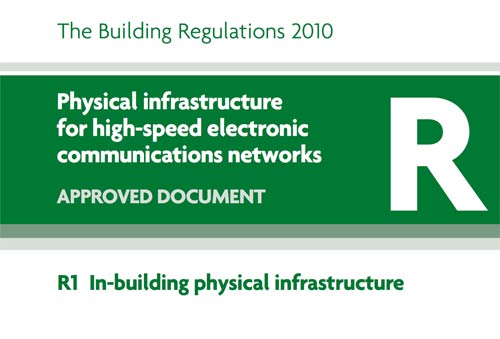
Part R of the UK Building Regulations – Available to download here
The History of Part R of the Building Regulations
To fully understand what Part R of the Building Regulations, which come into effect in January 2017, is all about and what it covers, we must go back a couple of years.
In 2014, a long time pre the 2016 Brexit decision, the European Parliament and the Council of the European Union recognised that the digital market was profoundly changing.
They saw that integration of all markets across Europe (and beyond) could be “taken to a new level” by increasing the availability, speed and efficiency of broadband connections.
They also saw, in a far-reaching way, that every citizen and organisations of all kinds should have access to the digital economy in an affordable way. They initiated something called the European Digital Agenda and all member states, including the United Kingdom, voted in favour of its implementation.
It was noted however, during one of many meetings, that a huge part of the cost in providing such a service was due to the inefficiencies and misuse of the existing ductwork, badly sighted towers, poor masts and antennas, poles, manholes, cabinets pipework and conduits.
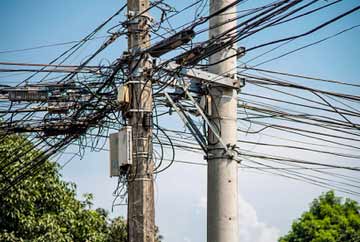
Digital communication has slowed down because of poor infrastructure
Broadband Infrastructure Poor all Over Europe
The European Parliament recognised that there had been absolutely no coordination efforts on behalf of local authorities and civil engineering and administration bottlenecks were to blame for the soaring cost of providing digital networks across Europe.
In short, Digital Service Providers had jumped onto the communications bandwagon and ridden it at full speed with no thought for other users or providers and most governments had simply allowed this to happen.
The Digital Agenda considered cost to be an extremely important factor and sought undertakings from all members to reduce the cost of all high speed broadband infrastructure by making it widely known that to connect everyone to high speed electronic communication networks would, very quickly, return all investments even if public and private charges were kept to a minimum.
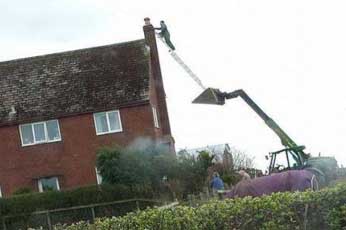
Man on a ladder on a digger connecting Internet cable
The British Government, having signed up to the Digital Agenda, instructed Broadband Service Providers and companies like BT, Virgin etc…. to undertake supplying high speed broadband connections to even the most remote parts of the UK.
This was the birth of Part R of the Building Regulations.
Consultations and Targets for UK Broadband Speeds
The UK Governments first step in 2014 was to implement an EU Broadband Cost Reduction Directive and for this it ordered a consultation to be carried out by the a consult with the Department for Media Culture and Sports.

Cost of broadband consultation via Department of Culture Media and Sports
They produced the following statistics to back up the idea of rolling out high speed broadband across all parts of the UK.
- 12.4 of the UKs Gross Domestic Product will be provided by the Internet by 2016. The average across the other (G20) member states was 5.4%
- 86% of UK adults accessed the Internet
- Civil engineering works accounted for 80% of the cost of supplying broadband connections
Clearly things must be made better. Minimum targets were set which included
- A minimum of 30 megabits per second must be achievable by 100% of households by 2020
- Speeds of over 100 Mbps must be achievable by 50% of households by 2020
- Costs of civil engineering works must be reduced by making construction firms work more closely with service providers and network operators
- The consultation would run from Monday 30th November 2015 to Monday 25th January 2016 when the new Building Regulation (R1) would be introduced
The Basic Premise of Part R of the Building Regulations
The three goals of the consultation were as follows.
- Stakeholders views on the feasibility of increasing broadband speeds to super-fast needed to be gathered
- To increase speeds but reduce costs it was obvious that existing infrastructure needed to be shared as did the cost of new infrastructure. The study therefore needed to find out the views on the providers of the infrastructures
- The consultation had to remain open minded to receive views and ideas from service providers where technical information could be completely understood
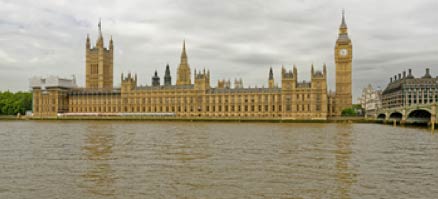
Government decides to increase broadband speeds on European directive
You can see the results, feedback and responses to the Government survey and consultation on the website for the Department of Culture, Media and Sport.
The idea of the consultation, In DIY Doctors opinion, was excellent. The Government sought to enlist the help of companies already providing physical infrastructure which could be used to carry high speed communication cables and circuitry.
Service companies in the Waste Water Industry were approached, Utility companies (Gas and Electricity) were contacted as were airports, railways and ports. Any major company, providing any type of National infrastructure were invited to participate to reduce the costs of our Internet connections.
Final Assessment of EU Broadband Consultation in UK
An assessment was made of the results of the consultation and this assessment concluded that:
- Firms operating in a range of sectors must share existing infrastructure where it is possible to do so
- Any company which uses public money to undertake civil engineering works must make every effort to coordinate their work to include the deployment of broadband when reasonably requested to do so
- All firms associated with the provision on infrastructure which could be used to deploy broadband must share information
- New buildings must be constructed with a basic in-built infrastructure to allow access to and provision of high speed broadband
Requirement of Building Regulation R1: In-building Physical Infrastructure
With consultations and directives complete it was time to put the Part R regulations together. The first part is the requirement of the regulation:
- Requirement of regulation R1 is that it applies only to the erection of a new building or to any renovation works which could be considered to be major in and on any existing building
- The work in a new building or modernised, renovated building, must be done in a way which allows for and provides a high speed ready infrastructure which is built in to the fabric of the building and takes it up to a network termination point for high speed electronic communications networks
- Where a large building, containing other dwellings (such as flats) is concerned the same rule as above applies but the access point must be a common access point for all dwellings
How a Building Should Perform Under Part R
The Secretary of State’s view is that a building will meet the requirement of Part R if it is designed and constructed so that high speed electronic communications networks can be installed in the future.
The requirement therefore is that ducts or conduits are installed from a point outside the building which gives easy access to high speed communication cables, optics and wires so that they may be bought into the building in the future easily to deliver a minimum speed of 30 Mbps.
Note: The standard copper cables connected to a service providers fibre network can deliver broadband to speeds of up to 70 Mbps.
The Part R "Get Out Clause"
Interesting to note that a proviso has been included in the Part R requirements which states that, should the cost of implementing Part R be greater than the benefits gained there is no need to comply.
However, to take advantage of this clause the company involved in the construction would have to prove that broadband could be supplied to the customer by a much more cost effective solution.
Ductwork for Copper and Fibre-Optic Cables
- Network Termination Points should be identified for each building or dwelling within a building and each one should be connected to a suitable access point where cables may enter
- For single occupancy building the following physical infrastructure may be provided (see below image)
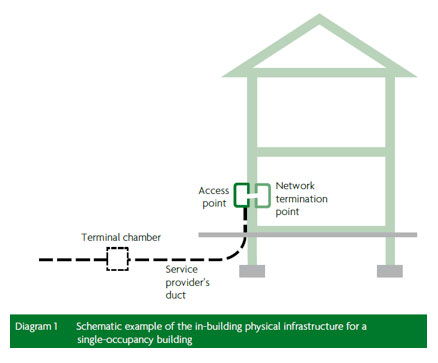
How ductwork for copper and fibre optic cables can be provided – Image courtesy of gov.uk Building Regulations Part R
Broadband Access and Termination Points for Multi-Dwelling Buildings
For Multi dwelling buildings there should be a common access point and routes to allow network service providers to connect up to termination points in each dwelling. An example of how this might be done can be seen below.
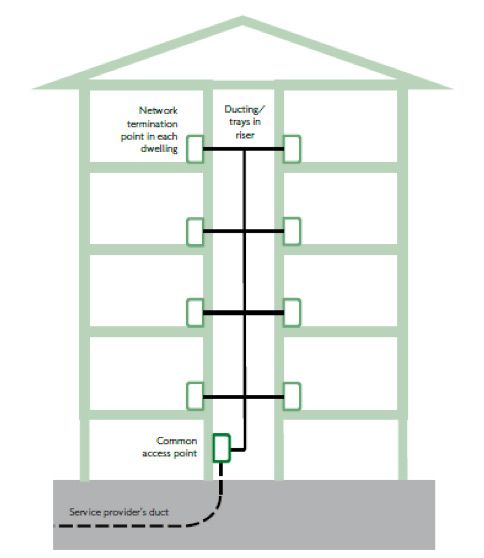
Multi occupancy dwellings need ductwork for fibre-optic and copper cables
Satellite and Wireless Communications
Satellite and wireless technologies must be taken into account when providing in-building infrastructure design when the required speeds can be met b those technologies.
Key Terms and Explanations to Language Used in the Part R Document
It is essential for builders, architects, designers and service providers to understand the terms used in Part R so we have identified them here as they are stated the Part R document. Thanks again to the Governments Building Regulation Department for the information.
What does Access Point Mean?
According to Part R, their definition of an access point is as follows (quotations courtesy of planningportal.co.uk Building Regulations Approved Document R):
A physical point, located inside or outside the building, accessible to undertakings providing or authorised to provide public communications networks, where connection to the high-speed- ready in-building physical infrastructure is made available.
What Does High Speed Electronic Communications Network Mean?
When references are made to high speed communication networks, this means:
An electronic communications network which is capable of delivering broadband access services at speeds of at least 30 Mbps.
What Does In-Building Physical Infrastructure Mean?
When looking at in-building physical infrastructure, this means:
Physical infrastructure or installations at the end- user’s location, including elements under joint ownership, intended to host wired or wireless access networks, where such access networks are capable of delivering electronic communications services and connecting the building access point with the network termination point.
What Does Network Termination Point Mean?
When a reference is made to a termination point, this means:
A physical point at which an occupier is provided with access to high-speed electronic communications networks.

